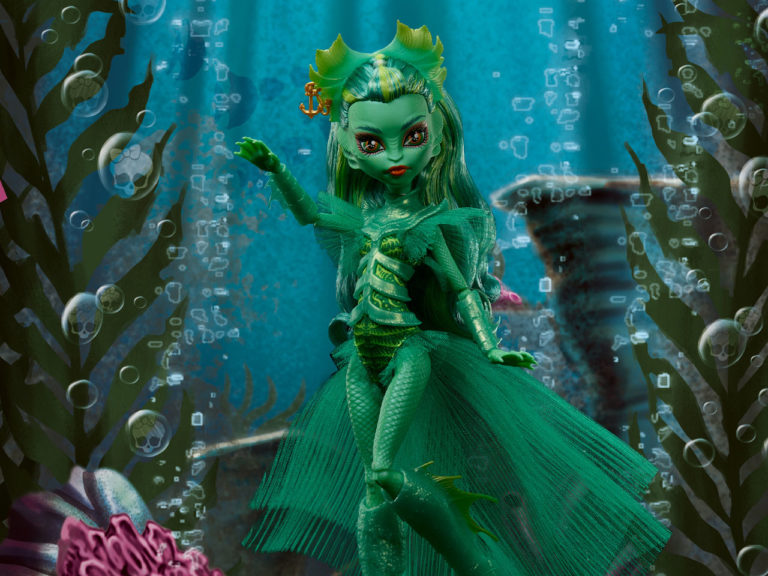
Batman/Catwoman #4 is mean down to the bone. No one, except the villains, likes each other and Tom King’s script offers mass murderers a sense of camaraderie our heroes seem incapable of possessing. Maybe that’s the point, I have little doubt it’s intentional, but between sloppy transitions and the detached aura the fractured narrative creates, there’s little romance beneath the heavy layer of grime.

I do like how King’s narrative actually takes a semblance of shape, directly continuing off of Selina’s torment of whether or not she should tell Bruce about Joker’s bomb and expose her connection to him in the process. The opening pages are lovely to look at and the faint glow of the bomb countdown visible through the ice is eerily juxtaposed against the happy families skating around the rink. Tomeu Morey’s colors here are wonderfully nuanced as well, as the red glow of the timer transitions to the overwhelming pinkish red palette of Phantasm’s opening page. The atmosphere Clay Mann’s pencils create along with Morey’s colors is always firing on all cylinders.

Helena’s involvement is larger this issue as she gets a few pages of interrogating old villains including Penguin. Mann pulls off a neat trick where one panel has Penguin’s goons run off to fight Helena, only for the next panel to show their bodies flying back the way they ran. This implication of violence empowers Helena by casting her more as a force of nature, whose movements are inevitable, not strained. It also probably saves Mann some time from having to draw a more complex sequence without losing any impact. Nonetheless, Helena’s characterization is thin as of right now and her primary purpose comes off more as a plot device to crank up the tension against Selina for murdering Joker. The main thing we learn is that Batman’s other rogues were well aware of Selina’s “friendship” with Joker, as well as their overall sense of community. Clayface even says that all the rogues were friends with each other, taking turns “in and out of Arkham”. It’s an odd choice, but the idea of a community of villains is intriguing, perhaps more intriguing than the central plot at hand here.

Some curious choices are also made with the various animals that show up throughout the issue. In the Phantasm time period, Selina wakes up after their fight and follows a rat down some stairs to find Phantasm, who has taken her hostage. It’s a good play on Selina’s “feline” connection to rodents, as its presence seems to indicate the tables being turned on her. More loaded is a later scene where an elderly Selina confronts Penguin about what information he gave to Helena during her interrogation. The end result is Selina’s cat devouring Penguin’s…penguin in a very graphic splash page. King’s script uses animals here as a sort of totem, either representing our heroes’ inner animalistic nature or foreshadowing their fate. It’s also a very dark take on our heroes’ current situations. A younger Selina finds herself as Phantasm’s prisoner, like a rodent in a trap, and an older Selina uses her feline companion in a display of horrific violence. It’s grim stuff. There’s a good exchange between Selina and Phantasm where Selina tries to relate that she and Bruce are looking for whoever murdered Phantasms’ son. Phantasm retorts that Bruce only forgives and doesn’t actually help given his inability to kill Joker since he always escapes Arkham. This argument is made by many villains, but Andrea and Selina’s romantic connections to Bruce add a layer previously untapped.

Lastly, the scenes that deal with the early days of Bruce and Selina’s relationship are the most frustrating. I’m not sure Selina’s self loathing anger toward Bruce is all that compelling. Whether or not Selina is truly good or evil is a staple of her character, but given we know that Bruce and Selina do end up together, even until Bruce’s natural death late in life, there’s a lack of true drama. We’ve seen Bruce and Selina argue over this before. There’s an attempt to trace all of Bruce’s romantic relationships ending in violence, but this angle feels shoehorned into the final pages of this issue. There’s room to maneuver within this theme, we’re only four issues in, but the push and pull of the Bat/Cat romance should choose a direction since King already had eighty-five issues to work this out. As it stands, the Phantasm storyline is picking up steam, the future storyline is in a holding pattern as Helena investigates, and the past storyline is repeating beats from King’s own Batman run. I do like the sequence where Batman disarms the bomb; a lone figure on the ice putting his life on the line is a nice moment for a superhero story. Maybe he should be in the book more.
Recommended if…
- Seeing Phantasm actually interact with our main characters is something you’ve been waiting for.
- You don’t mind another take on “Should Batman kill the Joker since he always escapes Arkham”.
- Helena Wayne is a main draw since her presence is becoming more prominent.
Overall
Batman/Catwoman #4 solidifies the series as a grim look at love, whether it be romantic or familial. The competing storylines always end up signaling one of the time periods as the weakest of the three, but Phantasm’s presence is more fleshed out than before. Her scene with Selina is the most compelling sequence, but mostly because it’s an interaction we haven’t really had before. The book is gorgeous as ever, but the series’ ingrained structure leaves readers hanging onto the past when the future is far more interesting. The thematic connections between the three time periods could stand to be more overt and less implied, that is if the narrative continues to be drip fed.
Score: 6.5/10
Disclaimer: DC Comics provided Batman News with a copy of this comic for the purpose of this review.


